With a rich history stretching back over two thousand years, London is a living time capsule.
Remnants of a Roman wall cosy up to steel and glass office buildings. Elegant Georgian terraces evoke visions of gentlemen sporting top hats and ladies wearing delicate chemise gowns. Echoes of London’s past can be found across the capital if you know where to look.
Walk in the footsteps of past generations of Londoners by exploring these old streets of London.
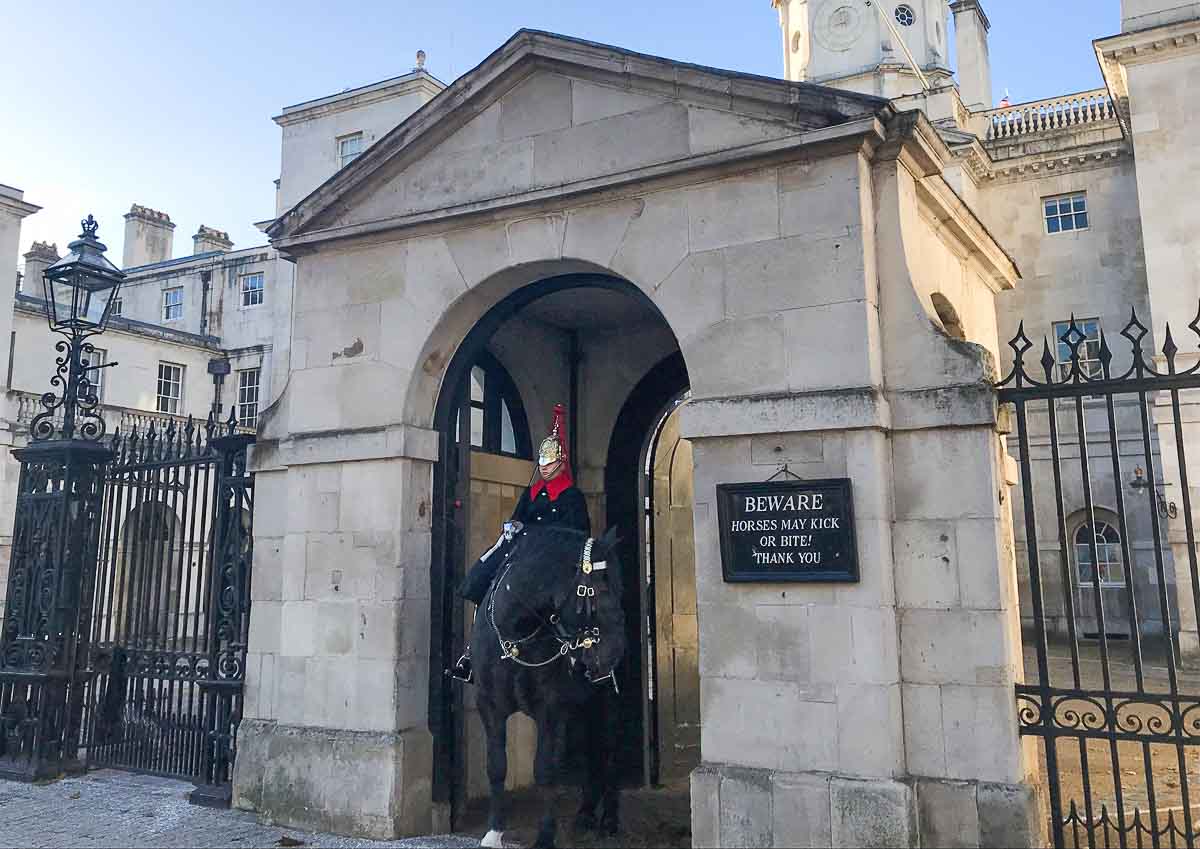
A Short History of London
London owes a debt of gratitude to Julius Caesar.
Although the Roman city of Londinium wasn’t founded until 88 years later, his army landed in Kent in 55 BC and marched northwest until it reached the River Thames at what is now Southwark. At that time there were only a few startled tribesmen on the opposite bank of the river.
Over the next 2,000 years, it became the capital of England and a centre for art, culture and exploration under Elizabeth I. In the 1600s, it suffered the devastation of the Black Death, the Great Fire and the Civil War.
The 17th Century was not a good time for London.
Georgian London was a period of great growth, with the building of elegant squares and sweeping terraces. But much of today’s London is Victorian, an era that heralded the rapid expansion of the city and the building of terraced houses on former green spaces.
Oldest Streets in the City of London
Let’s start where London itself began: The City of London, which sits in the footprint of ancient Londinium.
Although the main arteries of this area of London – Bishopsgate, Ludgate, Aldgate and Newgate – are all Roman in origin, the original streets are long gone.
An area map is here if you need it.
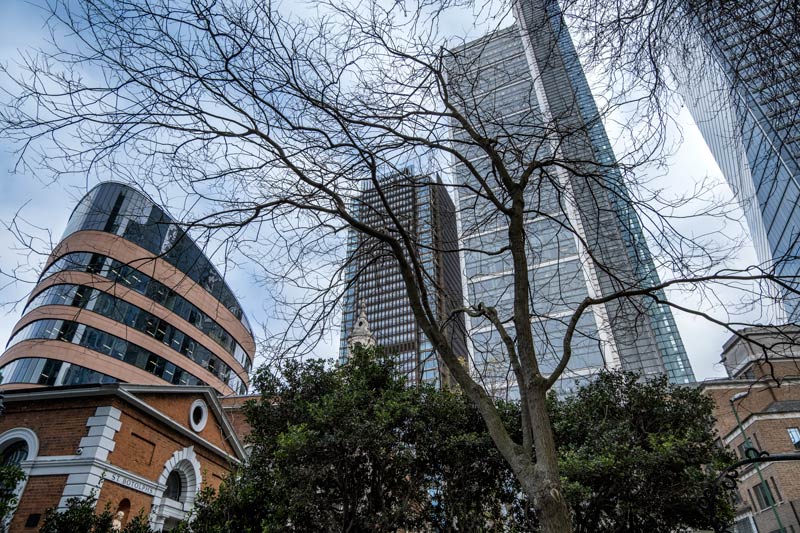
1. Roman pavement at the Church of All Hallows by the Tower
In the shadow of the Tower of London, you will find one of the oldest streets in London.
There has been a church on the site of All Hallows by the Tower since 675 AD, making it the oldest church in the City of London. Take the stairs down to the church’s crypt to view a rare section of one of London’s Roman pavements.
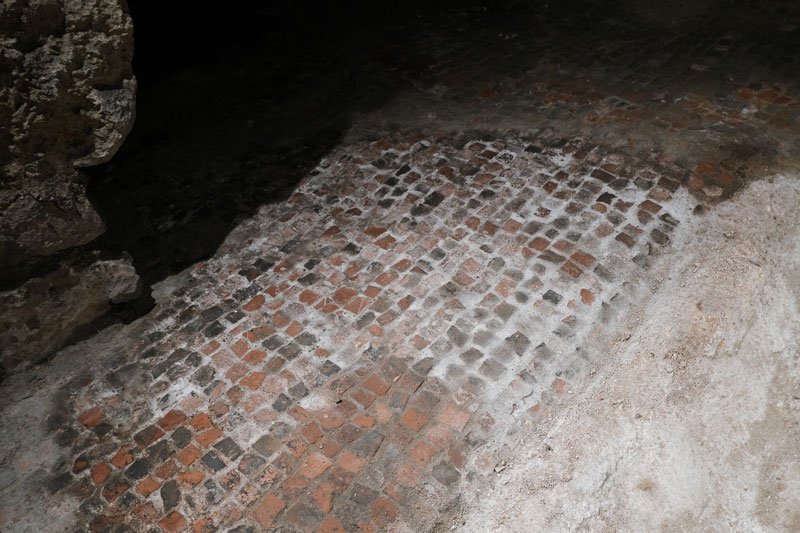
Whilst you are in this area, why not take the opportunity to visit the Tower of London? Better still, time your visit with the lifting of Tower Bridge, one of London’s most well-known bridges.
Address: Byward Street, London EC3R 5BJ
Nearest Tube station: Tower Hill
2. Pudding Lane
This historic London street was the site of one of the most devastating events in the city’s history.
In September 1666, a spark from an oven in a bakery that stood at 23 Pudding Lane resulted in an inferno that tore through the City of London. The Great Fire of London destroyed 13,200 houses, 87 parish churches and St Paul’s Cathedral.
This event is marked by The Monument, one of London’s famous landmarks.
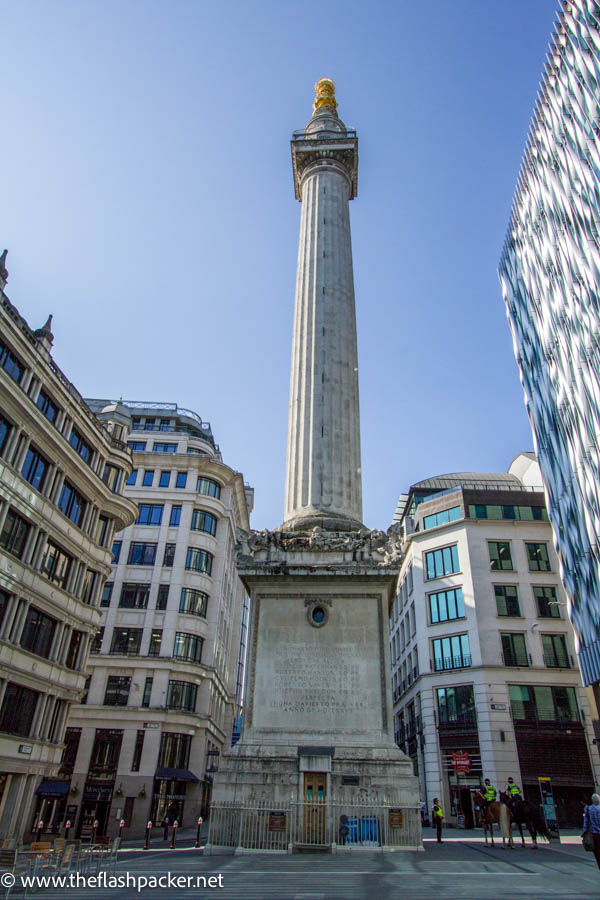
Nearest Tube station: Monument or Bank
3. Threadneedle Street
The name of this London street is thought to relate to its early role as a centre of the tailoring trade. The Merchant Taylors’ Company’s hall has been here since the 14th century.
One of nine streets that converge at the Bank junction, Threadneedle Street is famous as the site of the Bank of England. The Old Lady of Threadneedle Street, as the bank is often called, has been in its current location since 1734.
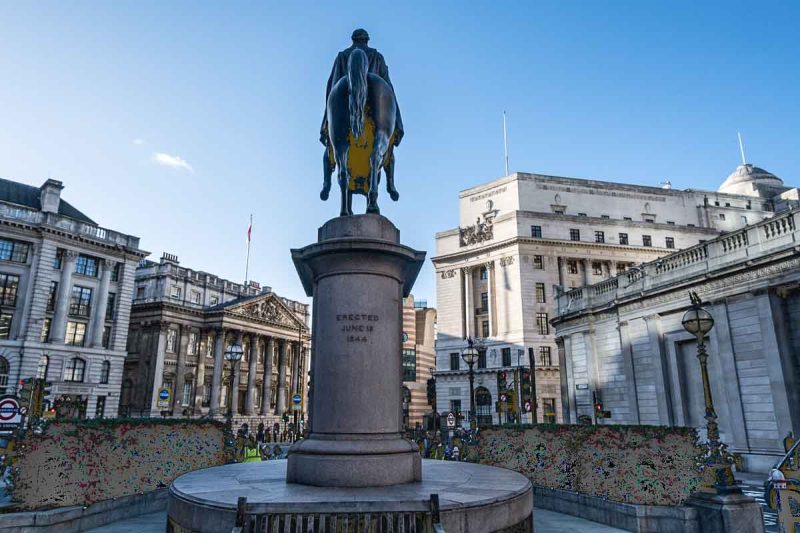
Nearest Tube station: Bank
4. Fleet Street
The endlessly fascinating Fleet Street is one of the oldest roads outside the original city of London. Businesses set up shop here in the Middle Ages and clergy made this street their home.
Statues of dragons that marked the entrance to the City are still there and Fleet Street is home to one of London’s oldest pubs, Ye Olde Cheshire Cheese. Rebuilt shortly after the Great Fire of London, Dr Samuel Johnson, Samuel Pepys, Charles Dickens and Mark Twain numbered amongst the pub’s patrons.
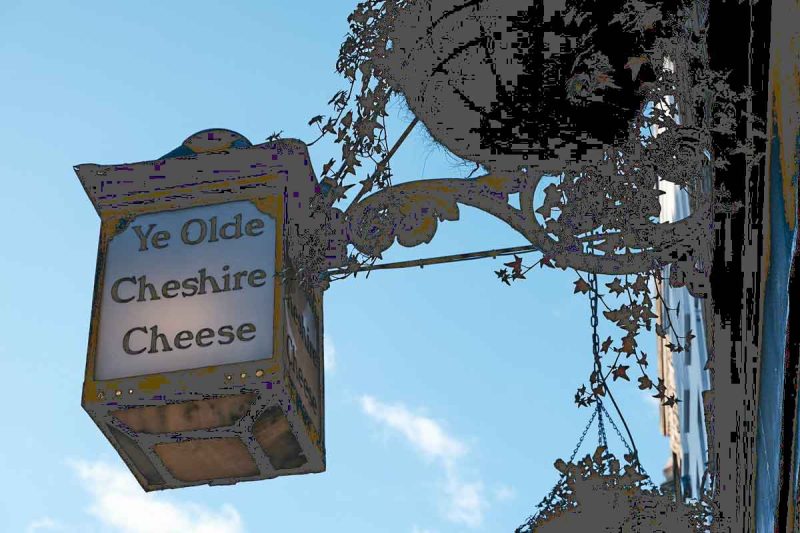
Nearest Tube station: Blackfriars
5. Cloth Fair
At 41 / 42 Cloth Street you’ll find the oldest house in the city of London and one of the few survivors of the Great Fire of London. There are rumoured to be skeletons in the foundations.
This pretty London street is named after the famously rowdy Bartholomew fair, which was the main cloth fair in medieval and Elizabethan times.
Cloth Fair is also home to one of London’s oldest churches, The Priory Church of St Bartholomew the Great, sometimes abbreviated to Great St Bart’s.
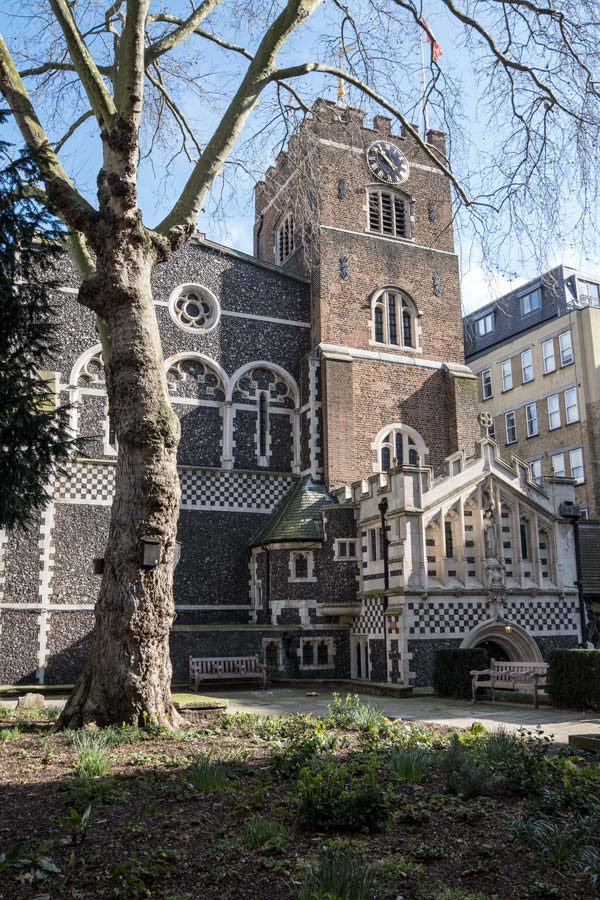
Nearest Tube station: Barbican
Old Streets in London’s East End
The area around Spitalfields is a treasure trove of old London streets.
Inhabited since Roman times, the area was settled by the Huguenots from the 1570s. Escaping persecution in Catholic France, they established silk-weaving businesses in the area. Many of their cottages and business premises survive to this day.
The 19th Century saw an influx of Jewish immigrants, many fleeing the anti-Semitic pogroms in Poland and Russia.
Today, the Bangladeshi community dominates Spitalfields, many settling here after fleeing civil unrest in what was then East Pakistan in the 1960s.
An area map is here.
6. Fournier Street
Fournier Street is our first example of a fine Georgian road.
The 18th Century houses lining the north side of this street have attics with broad windows, designed to offer the silk weavers maximum light.
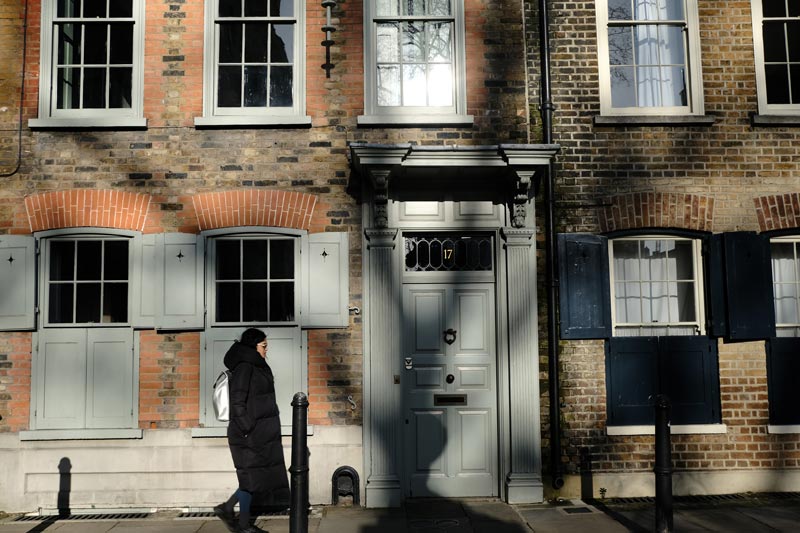
Nearest Tube stations: Liverpool Street or Aldgate
7. Folgate Street
If you want to get a sense of how the Huguenots lived, visit Denis Severs’ House at number 18 Folgate Street.
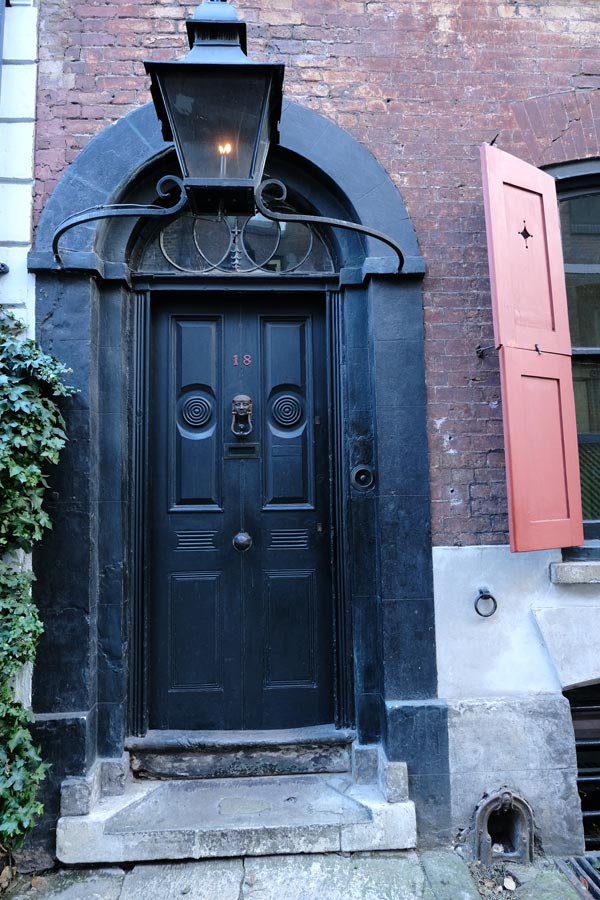
When Denis Severs arrived in Spitalfields in 1979, this house was largely derelict. He lovingly restored it to tell the story of an imaginary Huguenot family who had lived there since it was built in 1724.
This unique London museum is open from Thursday to Sunday.
Nearest Tube station: Liverpool Street
8. Elder Street
Around the corner, on Elder Street, are two of London’s earliest surviving terraces. Also built in the 1720s, these elegant Georgian red-brick houses have been painstakingly restored.
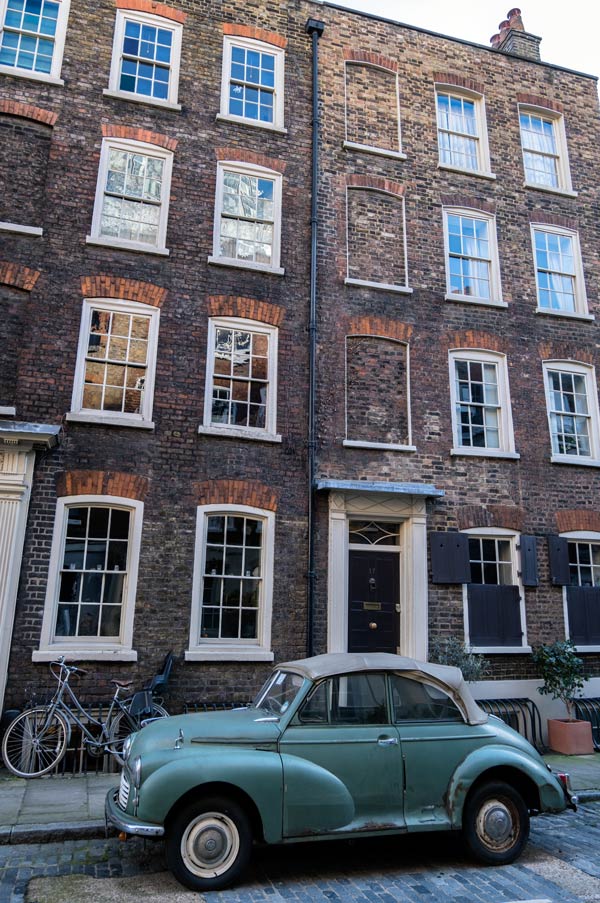
Whilst you are there, take a look also at the neighbouring Fleur de Lys Street, another fine historic London street.
Nearest Tube station: Liverpool Street
9. Artillery Passage
Artillery Passage gives you an excellent idea of what London must have looked like almost 300 years ago. Some of the buildings lining this narrow thoroughfare date from the early 1700s.
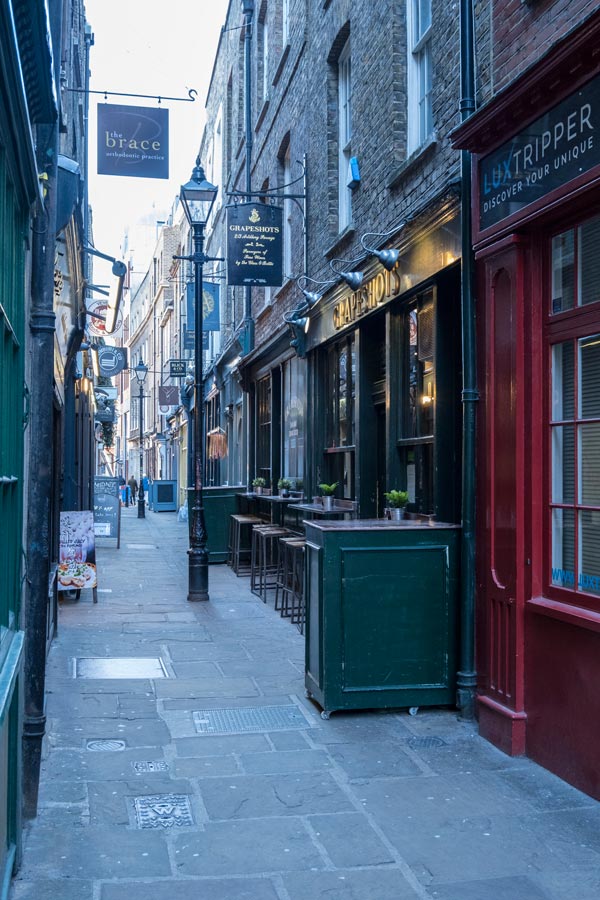
Like the neighbouring Gun Street, Artillery Passage takes its name from the ‘Fraternity or Guild of Artillery of Longbows, Crossbows and Handguns’ who were given rights by Henry VIII to practice their archery on the nearby St Mary Spital’s fields.
At the end of Artillery Passage, there are two fine Georgian houses at numbers 56 and 58 Artillery Lane, built in 1705.
Nearest Tube station: Liverpool Street
10. Brick Lane
This busy centre of London’s Bengali district has shops and houses dating from the 18th Century and has seen waves of immigrants of many nationalities.
Brick Lane is famous for its Sunday market, its curry houses and as the epicentre of London’s street art scene. One of the best things you can do in London is to take a walking tour of Brick Lane’s urban art, either self-guided or as an organised tour.
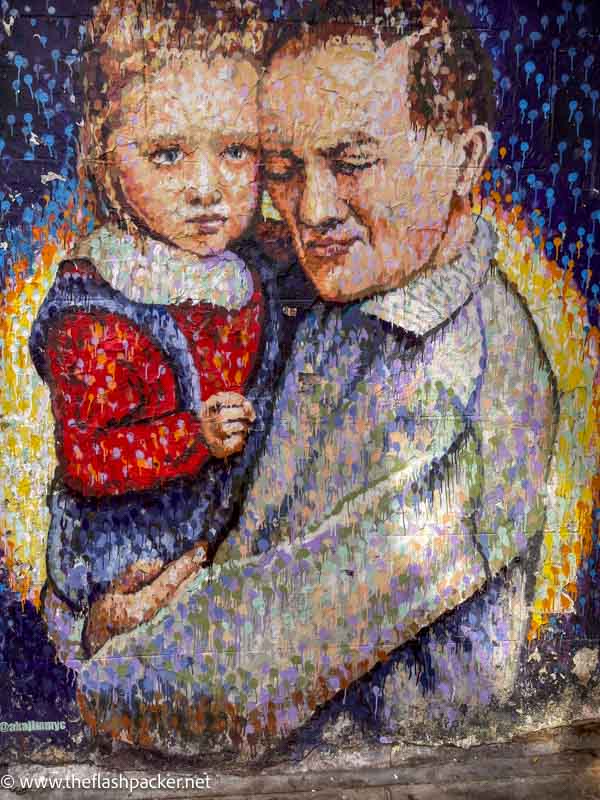
Nearest Tube stations: Liverpool Street or Aldgate East
11. Princelet Street
There’s more street art to be had on neighbouring Princelet Street.
Numbers 6 – 10 were once home to a Yiddish theatre known as the Hebrew Dramatic Club, which was founded in 1886.
A year later, 17 people were crushed to death during a false fire alarm. Its founders, Jacob and Sarah Adler, moved to New York where they became major players in the theatre and the nascent Hollywood film industry.
This historic London road is also home to 19 Princelet Street, the first museum of immigration and diversity in Europe.
Nearest Tube stations: Liverpool Street, Aldgate East or Aldgate
Historic Streets in London’s Soho & Piccadilly
Multicultural Soho has satisfied appetites – sexual, culinary and intellectual – since it was first developed in the 1670s. In contrast, Piccadilly & St. James’s was surrounded by royal residences and was a popular shopping district for the well-heeled in the 18th Century.
An area map is here.
12. Greek Street
Reflecting Soho’s multicultural nature, this old London street is named after the Greek Christians who settled in Soho in the 17th Century.
It is home to not one, but two historic pubs.
Established in 1847, The Coach & Horses is famous for its political and journalistic associations, notably with the columnist Jeffrey Bernard.
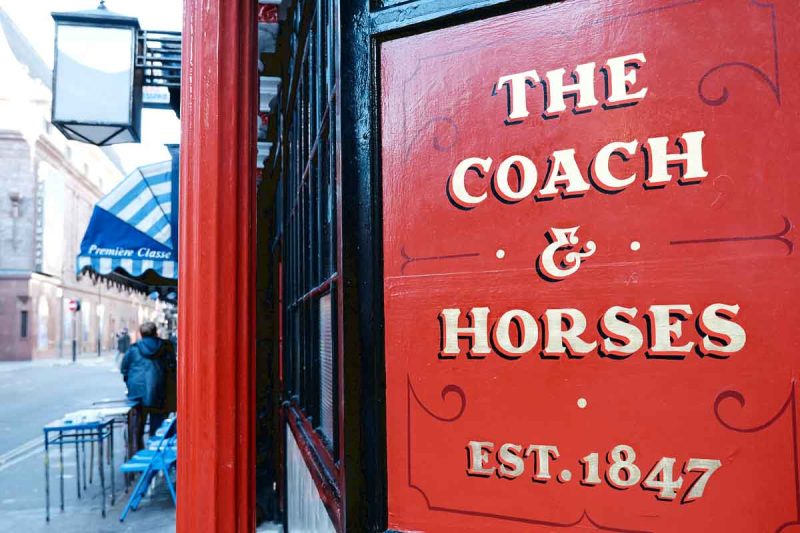
At 7 Greek Street, the Pillars of Hercules (now known as Bar Hercules) opened on this site in 1773 and is mentioned in A Tale of Two Cities. It was a well-known hangout for writers, frequented by the likes of Clive James, Julian Barnes, Martin Amis and Ian McEwan.
Nearest Tube stations: Leicester Square or Tottenham Court Road
13. Frith Street
Running parallel to Greek Street, like much of Soho, Frith Street was laid out in the late 17th Century.
Wolfgang Amadeus Mozart lived here between 1764 and 1765. It was from a building on Frith Street that John Logie Baird gave the first public demonstration of television in 1926.
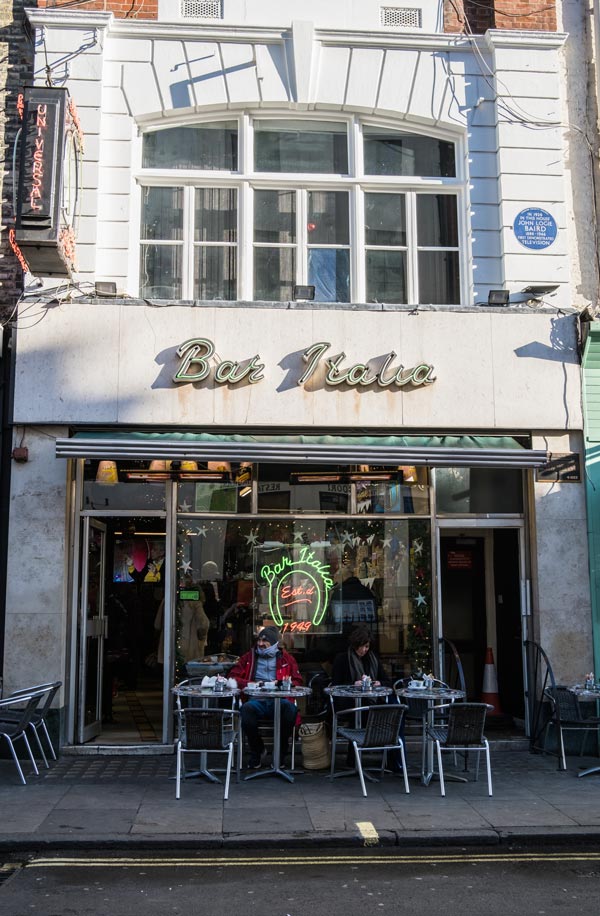
Nearest Tube stations: Leicester Square or Tottenham Court Road
14. The Strand
The Strand is one of London’s most interesting streets.
Taking its name from strond, the old English word for river edge, the Strand’s name was first recorded in 1185. This thoroughfare lined the Thames until the construction of the Victoria Embankment in 1870.
There is no shortage of important buildings along its ¾ mile length.
The magnificent Neoclassical complex of Somerset House houses exhibition spaces, including the Courtauld Gallery.
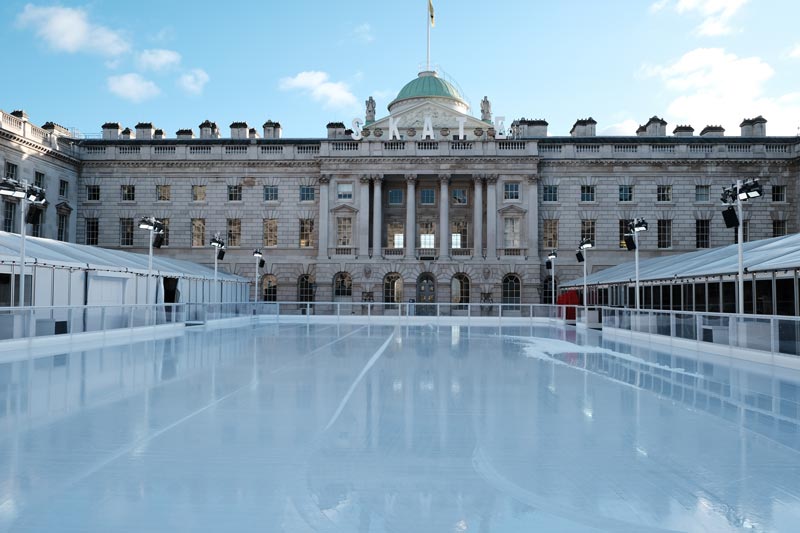
The Savoy Hotel, built in 1889 by the theatrical impresario Richard D’Oyly Carte, is one of London’s most famous luxury hotels. Close by, Simpson’s in the Strand (est. 1828) is one of London’s oldest restaurants.
At number 216 is one of the Strand’s oldest establishments. Twinings tea shop opened its doors in 1706, making it one of the oldest businesses in London operating at its original premises.
Nearest Tube stations: Charing Cross, Embankment or Temple
15. Haymarket
For the history of this old London street, I guess the clue is in the name.
Linking Piccadilly Circus and Pall Mall, Haymarket was a street market that sold hay, fodder and other farm produce during the 17th Century. At that time, this was a rural spot and the closest village was Charing, where Charing Cross is now.
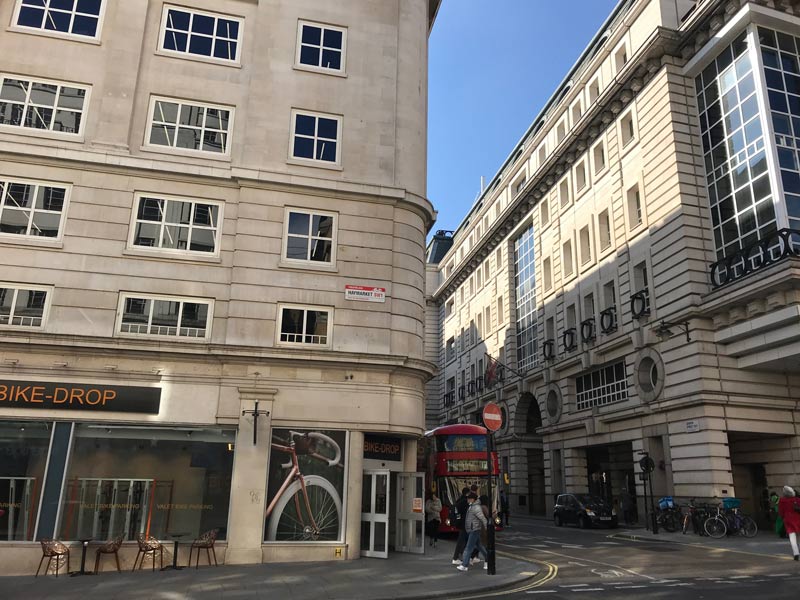
Trade continued at this site until 1830 when an Act of Parliament moved the market to Cumberland Market near Regent’s Park.
Today, Haymarket forms part of London’s theatre district.
Nearest Tube station: Piccadilly Circus
Old Streets of London: Westminster, Kensington & Chelsea
Venture further south and west for some of the grandest old streets of London.
Westminster has been at the centre of political and religious power in England since the beginning of the 11th Century.
Formerly a riverside village, Chelsea first became fashionable in Tudor times and was favoured by bohemian writers and artists in the 19th Century. Neighbouring South Kensington and Knightsbridge bristle with consulates, embassies, world-class museums and elite shops.
An area map is here.
16. Whitehall
This stately avenue is named after the Palace of Whitehall, the main residence of the English monarchs from 1530 until 1698. Although the palace was destroyed by fire, the Banqueting House still stands
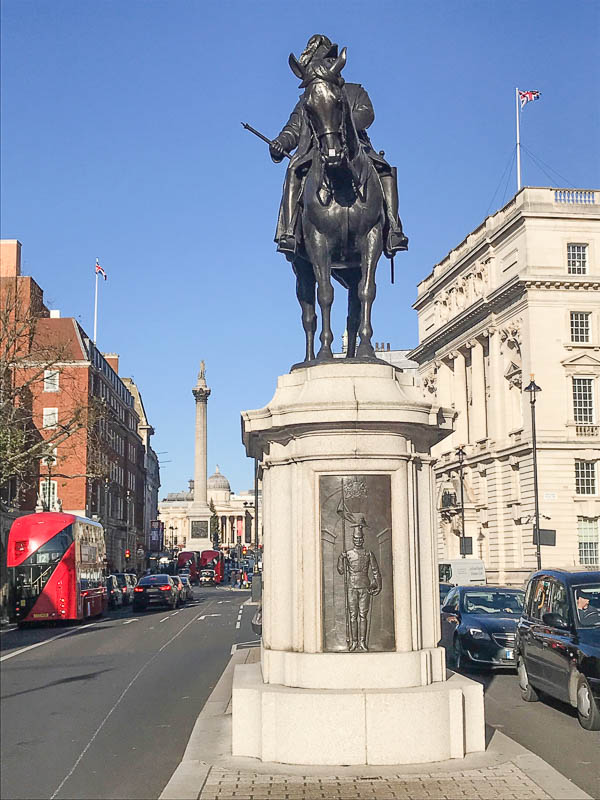
Whitehall has been the beating heart of political power in England for over a thousand years and is lined with government departments and ministries. Its most famous monument is the Cenotaph, Britain’s main war memorial.
Nearest Tube stations: Westminster and Charing Cross
17. Downing Street
This is one of London’s most famous streets.
Named after Sir George Downing (1623 – 84) who built a street of houses on land that he bought near Whitehall Palace, Downing Street has been the official London residence of the Prime Minister since 1732.
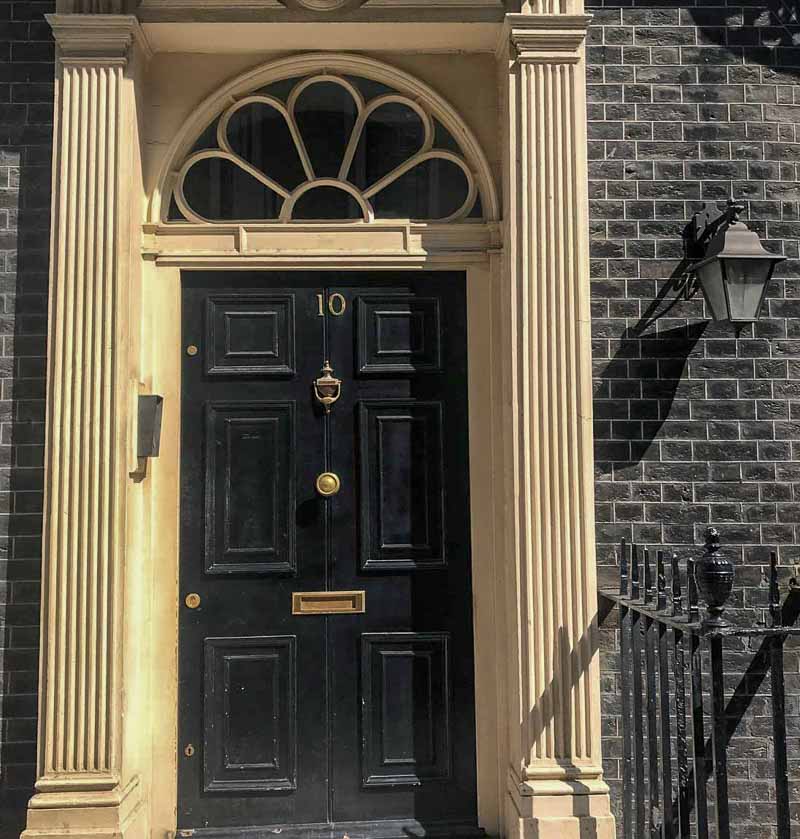
Although access to Downing Street is restricted for security reasons, you can take a look inside 10 Downing Street from the comfort of your armchair. This is one of the best virtual tours of London.
Nearest Tube stations: Westminster and Charing Cross
18. Cheyne Walk
Like the Strand, Chelsea’s Cheyne Walk was once a riverside promenade. That ended with the construction of the Chelsea Embankment in 1874, which sadly destroyed much of its charm.
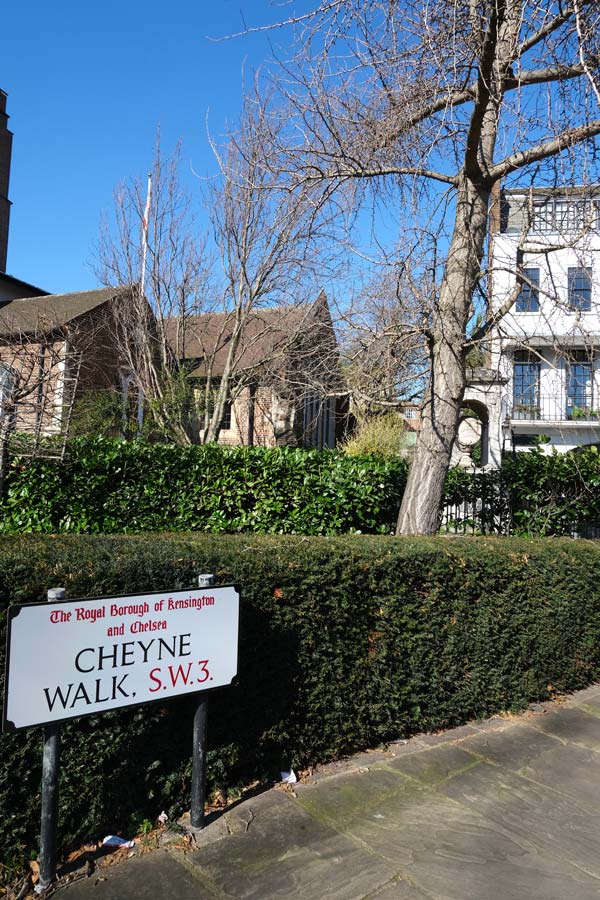
However, many of its elegant 18th Century houses remain and their walls groan under the weight of blue plaques celebrating some of the famous people who have lived there. Many of these were artists and writers, including George Elliot, Henry James, J M W Turner and Ian Fleming.
Nearest Tube station: Sloane Square
19. Kynance Mews
London is famous for its cobblestoned, flower-bedecked mews streets. Formerly the stables and servants’ quarters that served the city’s grand houses, these are now coveted places to live.
Kynance Mews is the most famous of the bunch.
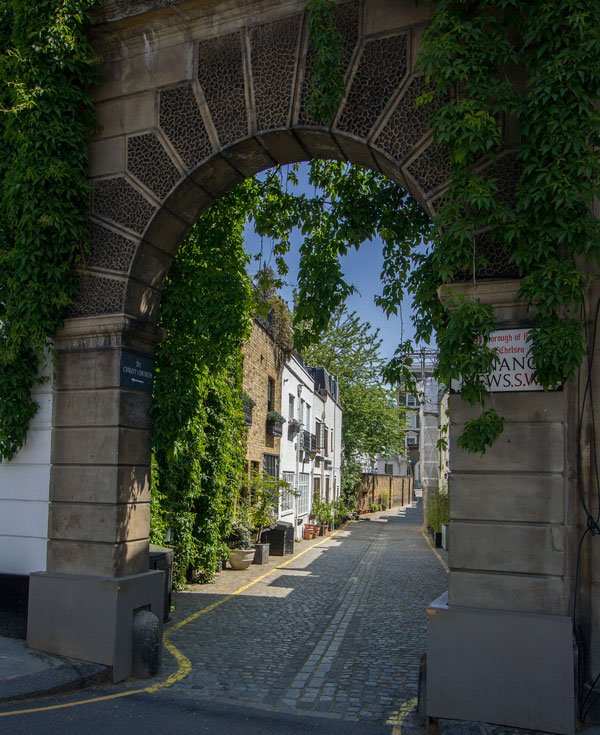
The entrances to the mews are through three Grade II listed arches, which were built around 1860. If you visit London in late spring, the buildings and arches are draped in wisteria. Come the autumn, the mews are transformed by spectacular displays of fall foliage.
Nearest Tube station: Gloucester Road
Other Old London Streets
20. Shad Thames
Like Kynance Mews, Shad Thames has been Instagrammed to the hilt. But don’t expect wisteria draped over pastel-coloured houses.
This photogenic cobblestoned street is lined with converted Victorian warehouses and crisscrossed by cast-iron overhead walkways.
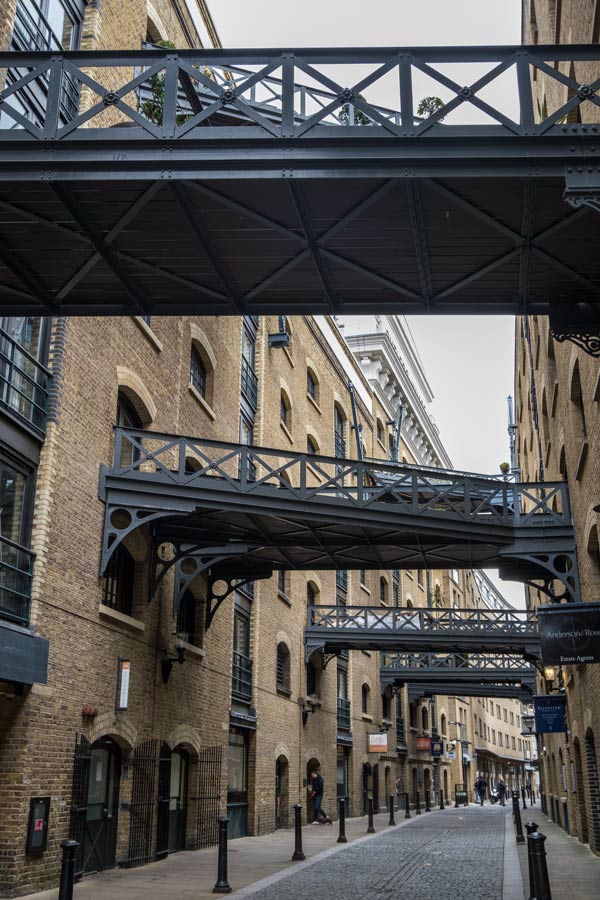
Shad Thames’s former warehouses were completed in 1873 and were used to store coffee, tea and other produce from all over the world. Their gantries were used to roll barrels from warehouse to warehouse.
Nearest Tube station: London Bridge | Area map here
21. Roupell Street
Step back into 19th Century London in Roupell Street.
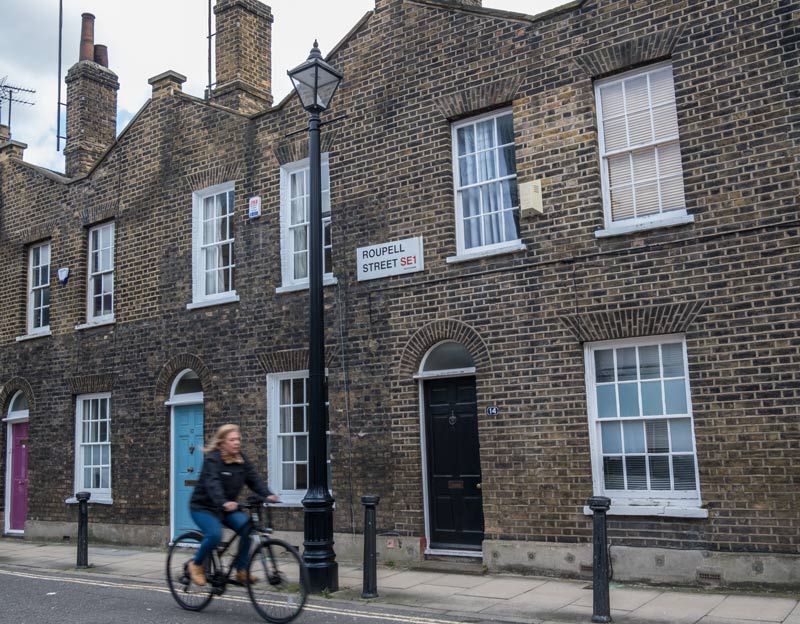
Along with the neighbouring streets that make up the Roupell Street Conservation Area – Whittlesley Street, Theed Street, Cornwall Road and Windmill Walk – its row of terraced houses have miraculously survived the bombs of the Blitz and the greedy eyes of property developers.
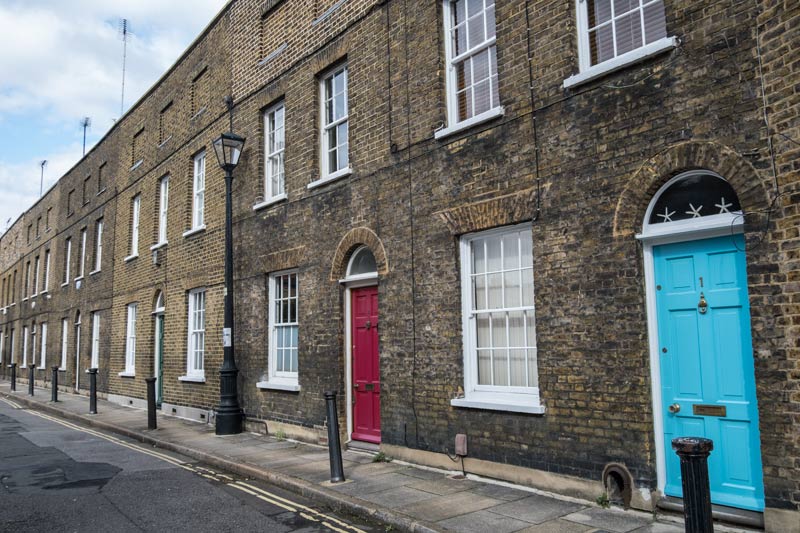
Nearest Tube stations: Southwark or Waterloo | Area map here
22. Little Green Street
Head to North London for the only intact Georgian Street in London, complete with its original houses and cobblestoned road.
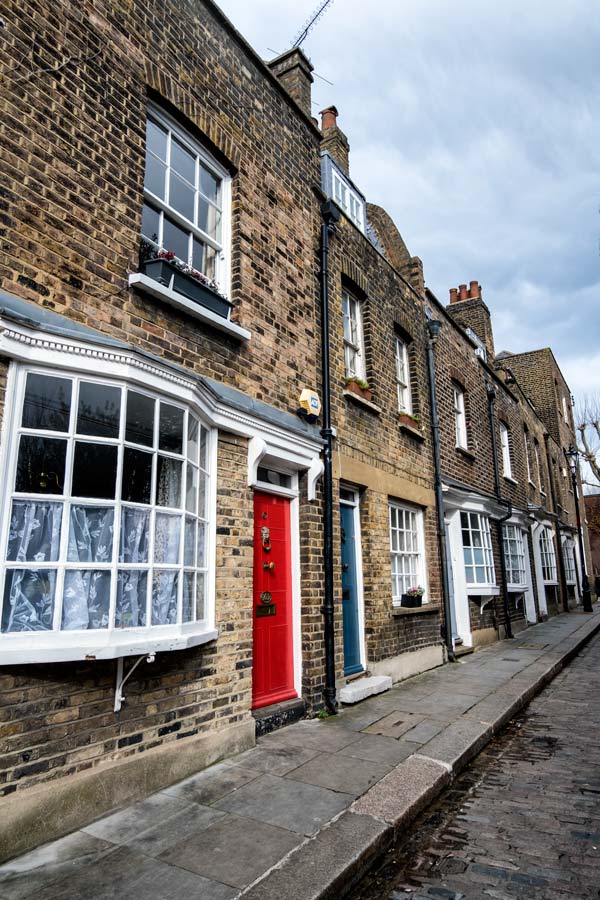
It is tiny; less than 10 feet wide, and with just eight houses on one side and two on the other. These houses were built in the 1780s and are Grade II listed.
Nearest Tube station: Tufnell Park | Area map here
Exploring London’s Oldest Streets
And that’s a wrap. Well, almost.
For the sake of brevity, I had to omit many interesting old London streets here. There are just some of the roads that didn’t make the cut.
- Cornhill, EC3
- Cheapside, EC2
- Lombard Street, EC3
- Paradise Row, E2
- Wapping High Street, Pier Head and Wapping Wall, E1
- King’s Bench Walk – Inner Temple, EC4
- Ely Place, EC1
- John Adam Street, WC2
- Kensington Palace Gardens, W8
- Rotherhithe Street, SE16
- Pond Square, South Grove and The Grove, N6
London’s rich history is told through the streets that many of us still walk along to this day. So pull on your most comfortable pair of shoes, grab your camera and explore.

About Bridget
Bridget Coleman is a Londoner and has been a passionate traveller for more than 30 years. She has visited 70+ countries, most as a solo traveller.
Articles on this site reflect her first-hand experiences.
To get in touch, email her at hello@theflashpacker.net or follow her on social media.
